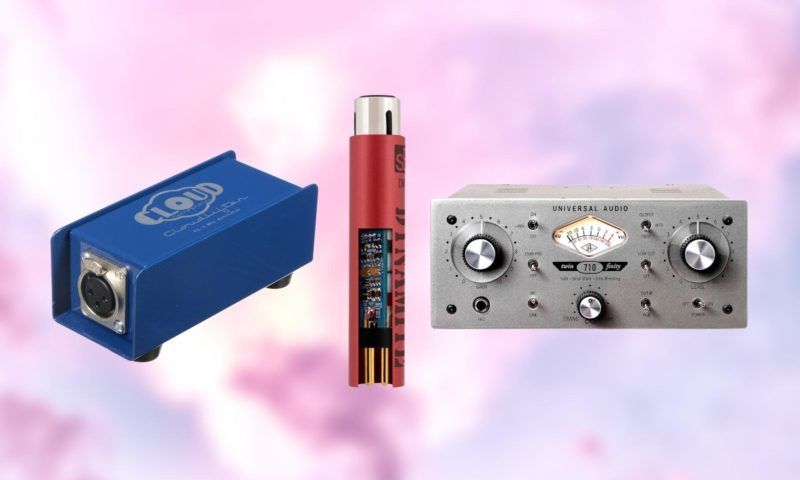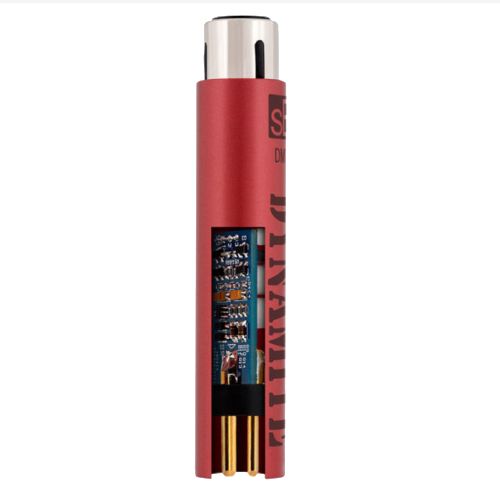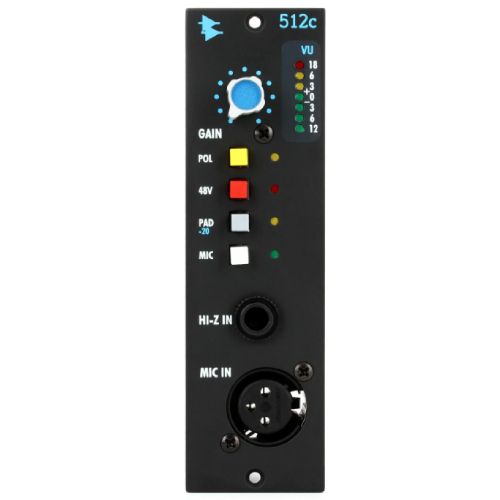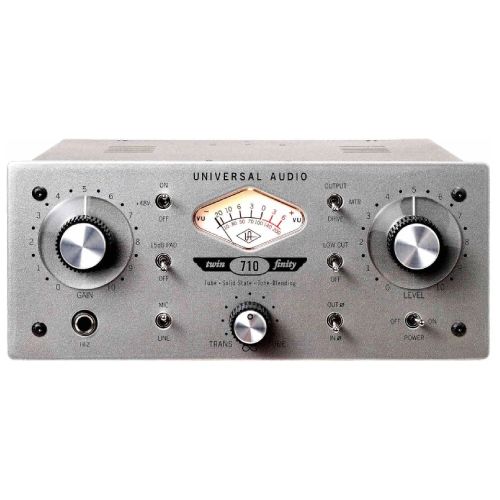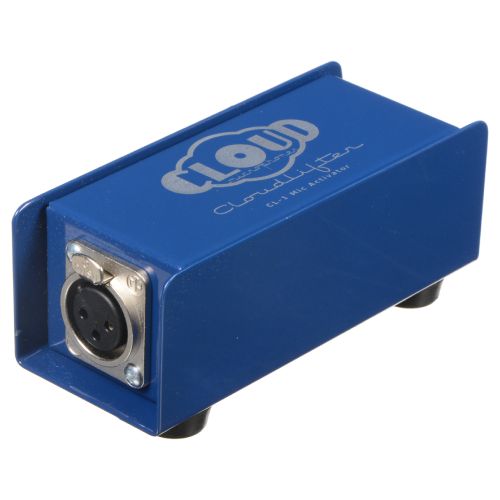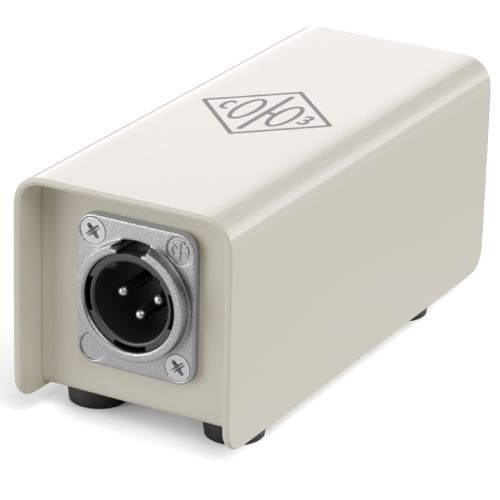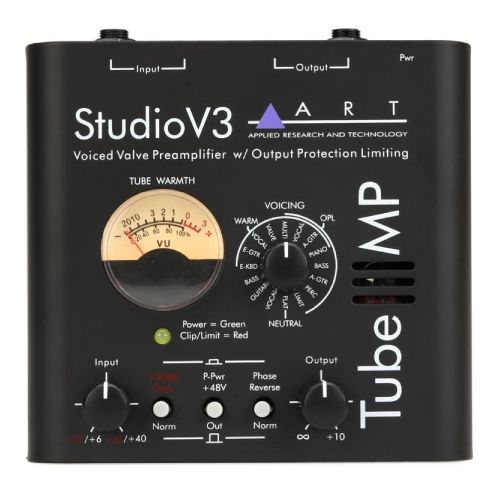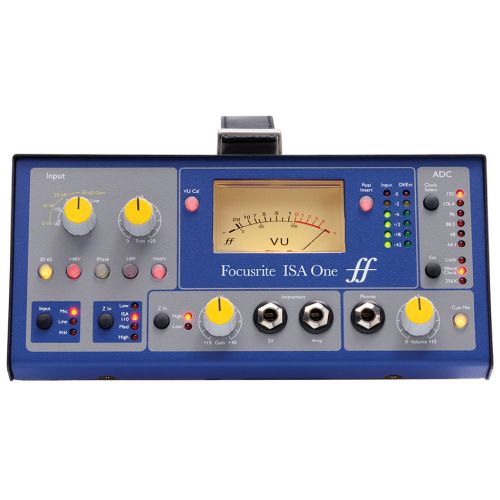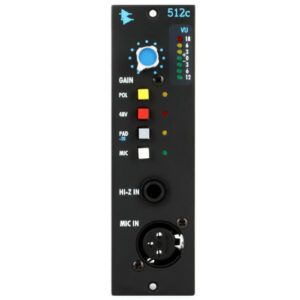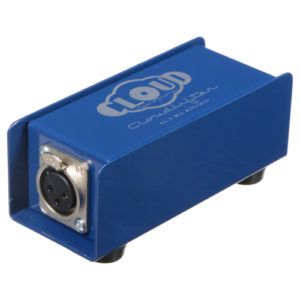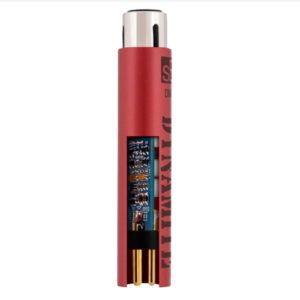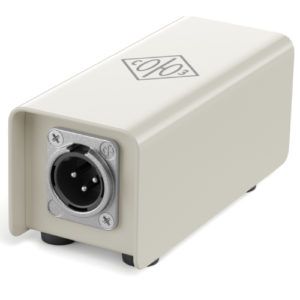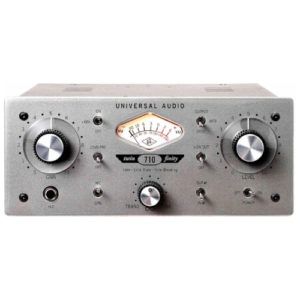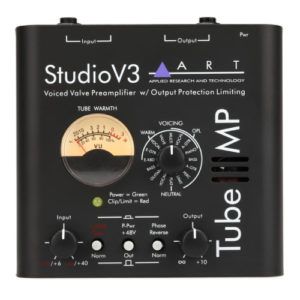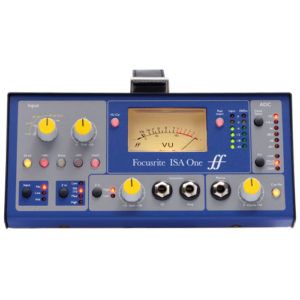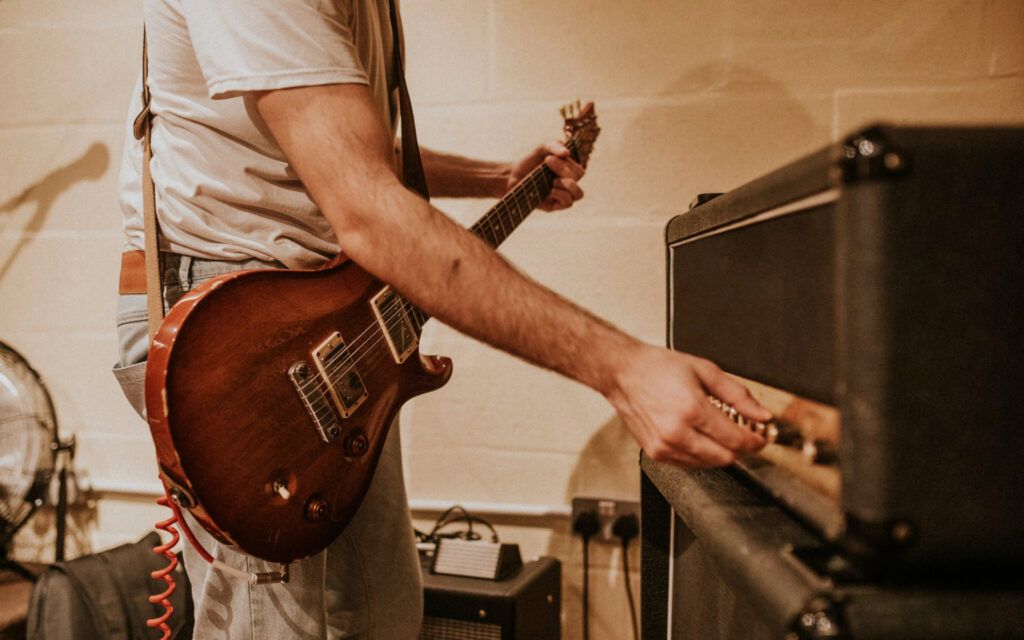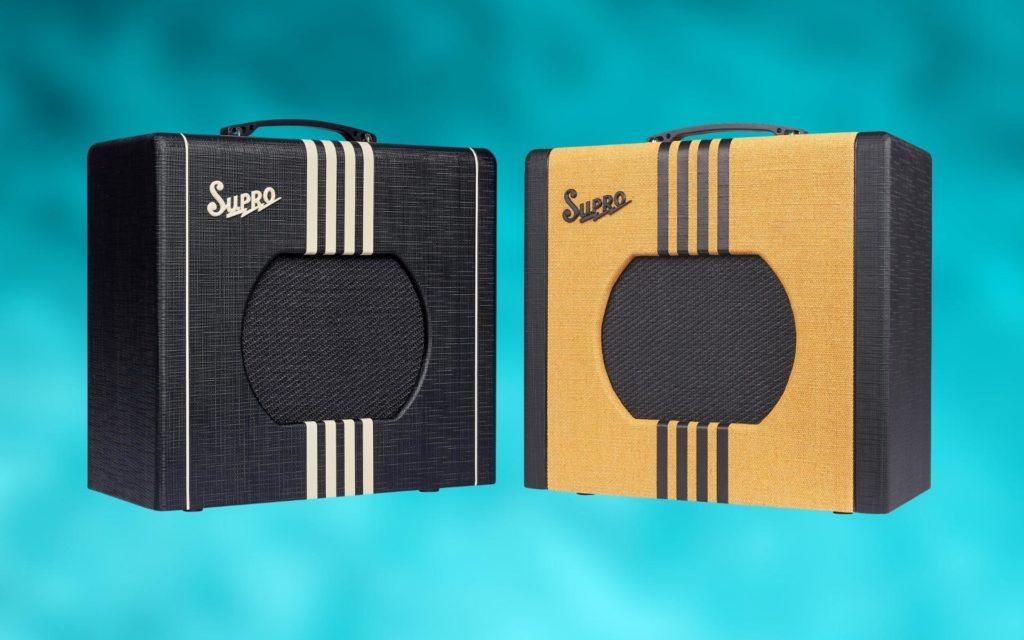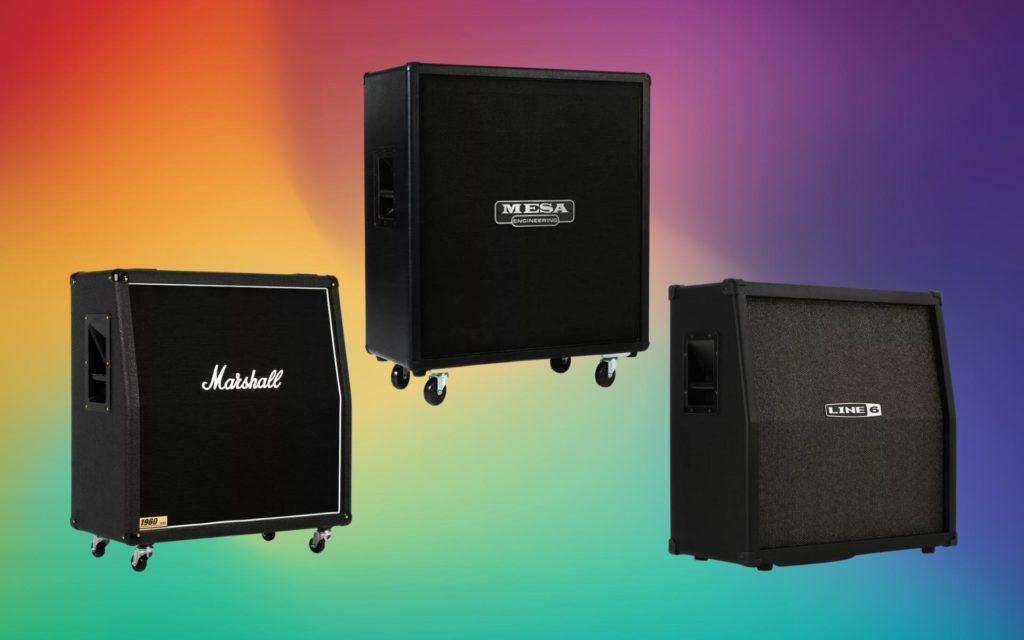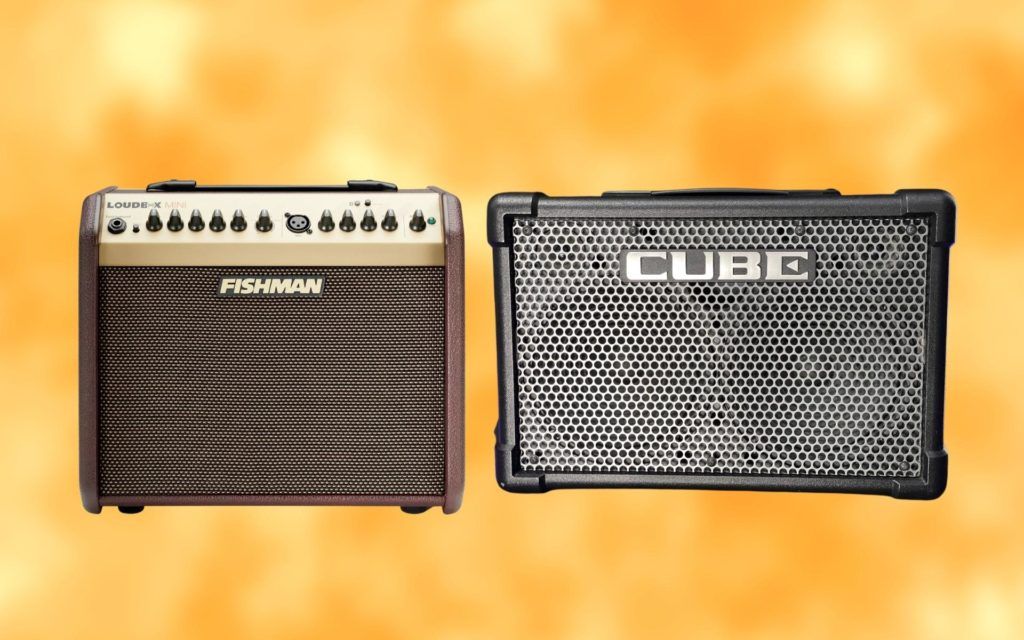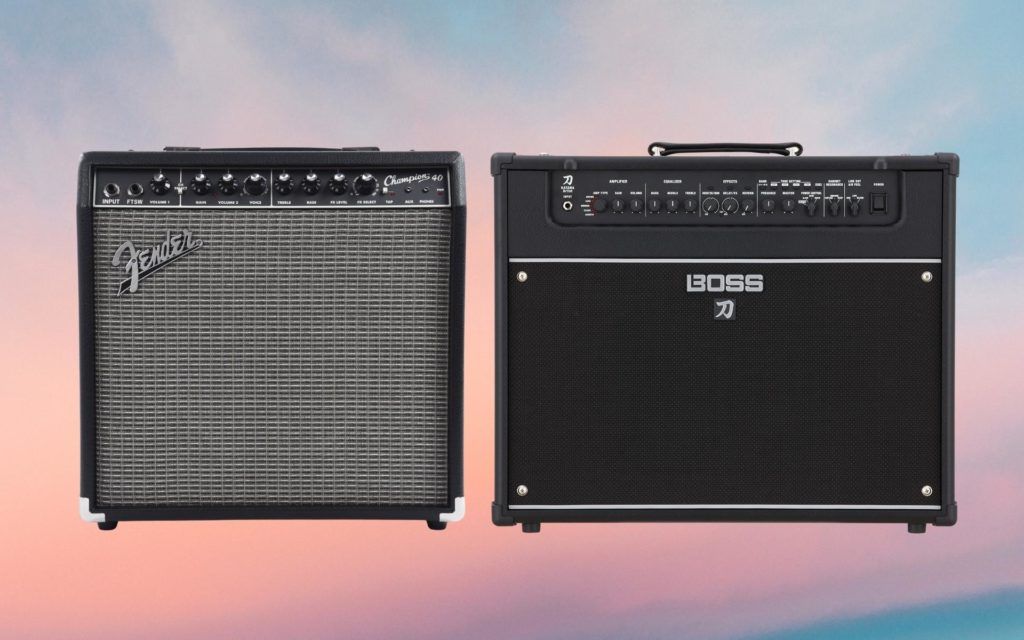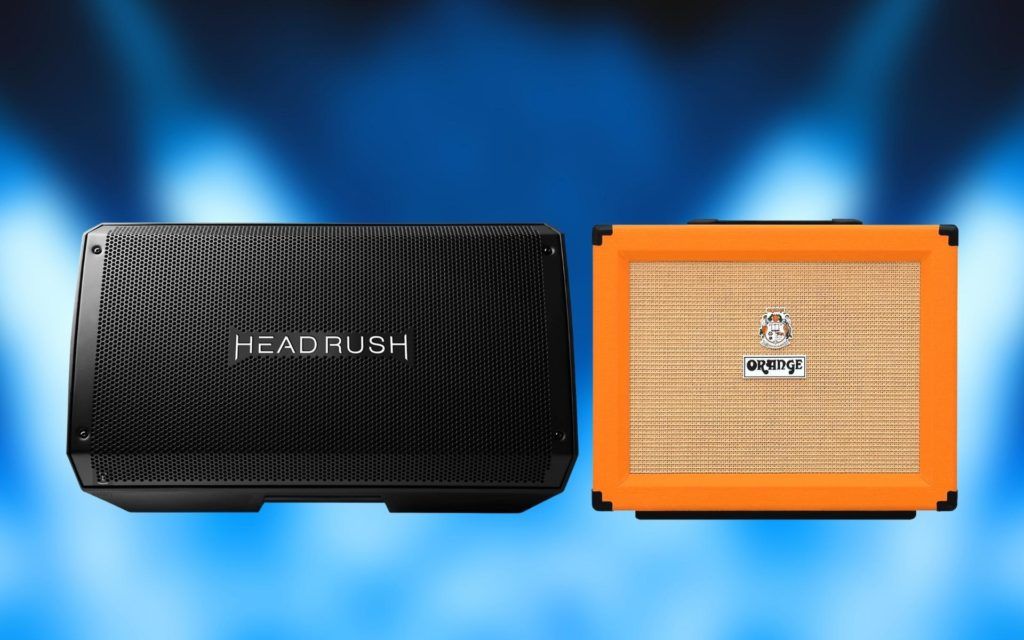We review products independently and our recommendations are genuine. If you purchase through links on our site, we may earn an affiliate commission. Learn More
The Shure SM7B is a popular dynamic microphone that can be used to record a wide range of sound sources, including vocals, drums, and guitars.
Due to the low sensitivity of the SM7B, it benefits from being used with a preamp. Mic preamps boost the signal by adding gain, which results in louder recordings and increased sensitivity.
The SM7B is that it is a low-gain microphone, and therefore records very quietly, especially when compared to other condenser vocal microphones.
In addition to adding gain to the signal, preamps also affect the tone of your recordings. In this guide, we’ll point you in the direction of the best SM7B preamps so that you can get the most out of this unique Shure microphone.
In a Rush’ Round-Up
How We Tested
To accurately test these Shure SM7B preamps, firstly we measured their impact on the dynamics of recordings made with the microphone. Then, we assessed the effect the preamp has on the tone and frequency of the recordings.
We then considered the versatility of each preamp, the extensiveness of its connectivity, and how easy it is to use. In the review below you can find the results of our tests, and use them to identify the best SM7B preamp for you.
Preamps for SM7B Reviews
API 512c 500 Series Microphone Preamp
API 512c 500 Series Microphone Preamp Review
Next up on our list is the API 512c Series Microphone Preamp. The API 512c pays homage to its roots, originating from the original 1967-era 512, which was API’s very first modular microphone preamplifier.
When I use the 512c, I’m greeted with that same iconic sonic character that played a significant role in the early days of recording.
The warmth and color it imparts to my recordings are unmistakable, making it an excellent choice for capturing vocals, acoustic instruments, and even line-level sources with equal finesse.
It also has incredible headroom. With 65dB of gain for microphones and 50dB of gain for line-level and instrument sources, this preamp can handle a wide variety of input levels without difficulty.
The 20dB pad switch is a valuable addition, allowing you to record even the loudest sources without distortion. The LED VU meter on the front panel provides a visual reference for monitoring output levels, ensuring that I can maintain precise control over my recordings.
The API 512c’s versatility is another strong point. With front and back panel access for both microphone and line/instrument inputs, it offers convenience and flexibility for various studio setups. The switchable 48v phantom power allows for compatibility with a wide range of microphones, making it an excellent choice for any recording scenario.
API’s commitment to quality is evident in the 512c’s construction. Its fully discrete circuit design, coupled with the use of the famous API 2520 Op-amp, ensures that this preamp will stand the test of time. The rugged build and enduring sound quality make the 512c a long-term investment that I can confidently rely on for many years.
In conclusion, the API 512c 500 Series Microphone Preamp, in my opinion, captures the essence of classic API sound and offers exceptional versatility and build quality.
Features:
- Mic Preamp with 65dB of gain
- Line/Instrument Preamp with 50dB of gain
- LED VU meter for monitoring output level
Pros
- Fantastic sound quality one would expect from API
- 20db pad switch allows for no audible distortion when recording
- Rugged build quality ensures stable performance
Cons
- On the pricier side for beginner users
Cloud Microphones Cloudlifter CL-1
Cloud Microphones Cloudlifter CL-1 Review
The Cloudlifter CL-1 is often paired with Shure’s SM7B. This preamp is very easy to set up and use, requiring you to simply plug the mic into the XLR port and send the output into your audio interface.
Providing +25dB of gain to the SM7B’s signal, the CL-1 offers adequate amplification to make recordings more audible. Sonically, it is highly transparent and preserves the natural sound of the SM7B’s capsule.
Another appealing aspect of the Cloudlifter CL-1 is its compact, uncomplicated design. The device can be slotted next to your interface without taking up excess space in your studio.
If you like to record on the go, the CL-1 is easy to transport and robust enough to withstand being moved around often.
In addition to being highly compatible with the SM7B, the CL-1 also has a built-in setting for ribbon microphones. This makes it a versatile addition to any home recording setup that is well worth the cost.
Features
- Provides up to +25dB of gain
- Noise-free operation
- Uses Class A JFET circuitry
Pros
- Compatible with SM7B and ribbon mics
- Compact, convenient design
- Works great with long cable runs
Cons
- Only has one mic input
sE Electronics DM1 Dynamite 1-channel Active Inline Preamp
sE Electronics DM1 Dynamite 1-channel Active Inline Preamp Review
sE Electronics is known for its affordable, innovative recording equipment. The DM1 Dynamite Preamp is designed to supply low-output microphones like the SM7B with optimal gain to increase the clarity of audio recordings.
One thing that I was highly impressed with when analyzing this preamp for SM7B mics was its ability to block out interference. The signal is kept incredibly clear, and no noise issues occur when using it for recordings.
This preamp is designed similarly to a shotgun condenser microphone, which means it won’t look out of place in your recording setup.
Another noteworthy quality of the DM1 is its incredibly low output impedance. This allows the preamp to drive the longest of cable runs, without compromising on signal strength or clarity.
The gain that this Shure SM7B interface supplies to the mic is consistent – remaining at 28dB at all times. Again, this ensures that there are no sudden spikes in volume or drops in audio quality.
Setting up this preamp for SM7B mics couldn’t be any easier. You simply connect the mic to the XLR input, then plug a balanced cable into the output and directly into your audio interface.
Features
- Up to +28dB of gain boost
- Class A FET circuitry
- Transformerless design
Pros
- Preserves natural sound quality
- Slimline design
- Reduces RF interference
Cons
- Requires +48v phantom power
Soyuz The Launcher Inline Active Preamp
Soyuz The Launcher Inline Active Preamp Review
The Launcher by Soyuz condenses the presence of a vintage mixing console into a small preamp, designed to provide dynamic microphones like the SM7B with a much-needed gain-boost and tonal enhancement.
If you long for analog tones when recording vocal or instrument tracks with your Shure SM7B, this preamp is worth considering. Rather than focusing on transparency, this device shapes the sound of your recordings in several ways.
Offering 26dB of gain, The Launcher adds unique color to the audio you capture. Moreover, it uses a hand-made transformer to add warmth to the midrange of your recordings, without making them sound overly processed.
No matter what purpose you often use your SM7B for, whether it be recording spoken word audio for podcasts or voiceovers, or musical recordings of acoustic guitar, amplified instruments, or vocals, this preamp can do it all.
When you consider the versatility of this SM7B preamp, it’s amazing that Soyuz has managed to cram it into such a compact, mobile chassis. This makes recording on the go a much easier endeavor.
Features
- Provides up to +26dB of gain
- Custom, hand-wound transformer
- High-quality proprietary circuitry
Pros
- Attenuates any noise in the signal
- Adds warm coloration to recordings
- Compatible with dynamic and ribbon mics
Cons
- Single XLR input
Universal Audio 710 Twin-Finity Microphone Preamp
Universal Audio 710 Twin-Finity Microphone Preamp Review
Universal Audio produces a range of recording equipment, and are perhaps best known for their boutique audio interfaces. The 710 Twin-Finity combines the best aspects of solid-state and tube preamps, making it a unique choice for SM7B users.
Inside the 710, there are two key components. Firstly, you have a Class A FET preamp, specifically for low-sensitivity microphones. Also, there’s a Class A tube preamp which adds another dimension to the device’s capabilities.
The thing I enjoyed the most about this preamp is that you don’t have to choose between the solid-state and tube settings. It is possible to blend both to suit the sound that you want to achieve.
Also, Universal Audio has installed a useful set of gain-stage controls on this preamp. These parameters can be used to add lots of gain to the SM7B input, which consequently insects warm, vintage characteristics into your recordings.
Universal Audio has a reputation for designing its products with a wide range of adjustable controls. The 710 Twin-Finity continues this trend, with an array of knobs and switches that you can use to customize the sound that your mic captures.
Features
- +70dB of gain
- Rackmount kit included
- Dual gain stages
Pros
- Combines solid-state and tube technology
- Enhances the tone of your recordings
- Warm, vintage-style sound
Cons
- Slightly complicated to operate
ART Tube MP Studio V3 Microphone Preamp
ART Tube MP Studio V3 Microphone Preamp Review
ART’s Tube MP Studio V3 builds upon the success of the previous editions, with additional controls and improved sound quality. This preamp is perfect for tube lovers who enjoy the warm, vintage sound that old-school devices produce.
Although this preamp is designed predominantly to be used with dynamic microphones like the Shure SM7B, it can also be used to record a wide range of electronic instruments and other sound sources.
One ability of this preamp that surprised me was its effect on drum recordings. Whether you use your SM7B to capture drums, or you simply take a line out of your audio interface and re-record them with the tube settings applied, it will transform them dramatically.
Housed within the ART Tube MP Studio V2 is a specifically chosen 12AX7a tube. This component provides authentic vacuum tube-style overdrive, which sounds great when recording electric guitars with your SM7B.
Additionally, this preamp offers +48v phantom power, along with an LED indicator that lets you know when the input signal is getting too hot.
Features
- +20dB of gain
- Onboard +48v phantom power
- Instrument-based preamp presets
Pros
- Warm, tube-driven sound
- Can be used with a mic or as a D.I box
- Great for live performances and recordings
Cons
- Increases the warmth of SM7B recordings significantly
Focusrite ISA One Desktop Microphone Preamp
Focusrite ISA One Desktop Microphone Preamp Review
Focusrite is best known for its exceptional Scarlett audio interfaces. Due to the success of those devices, the company has entered into an elite selection of recording equipment manufacturers.
The Focusrite ISA One Desktop preamp is a unique device, which looks like it has come straight out of the 1970s. However, don’t be fooled by the retro design – it is filled with useful modern features.
This could arguably be the best interface for SM7B mics, for many reasons. You get a clear visual indication of the gain settings, which makes it easy to rein in a signal that is too hot and establish the optimal levels for recording.
Installed on this preamp are three separate input sections. Firstly, you have the microphone inputs, which add gain to the signal and provide minimal coloration. Then there’s the instrument input, which allows you to connect an electric guitar, bass, or keyboard without the need for an amplifier.
Finally, this preamp has a line input for connecting any other sound source, such as a sampler or pre-recording composition.
Features
- Various impedance settings
- Dedicated mic, line, and instrument inputs
- Visual ladder LED meter
Pros
- Compatible with SM7B and all other mic types
- Can record multiple sound sources simultaneously
- Contains a range of useful controls
Cons
- Analog style design may take some getting used to
SM7B Preamps Buyer’s Guide
The Shure SM7B is one of the finest dynamic microphones available to musicians, podcasters, or any other recording artist. However, its low sensitivity can be frustrating and cause your recordings to lack clarity.
Choosing the best audio interface for SM7B mics is the most effective way to get the best recordings. Sure, you could try to process the audio and boost it in the mixing stage, but this may adversely affect the sound.
The preamps for SM7B microphones displayed in this guide have been tested to ensure that they will provide you with the best dynamic and tonal qualities that the mic has to offer.
Things to consider when buying
The amount of gain you need
Microphone preamps offer varying amounts of gain. Ideally, the SM7B requires a minimum of 25 dB of gain, but depending on the sound sources you intend to record, you may need slightly more or less than this number.
Consider the number of inputs
If you’re using the SM7B alone to record audio, you probably only require one XLR input on the mic preamp. However, if you intend to use multiple mics at once, it might be worth investing in a preamp with additional inputs.
Think about the sound you want to achieve
The main purpose of an SM7B preamp is to boost the signal by adding gain. However, each preamp also affects the tone of your recordings by adding coloration. If you enjoy warm-sounding recordings, a tube-style preamp may be the perfect solution. On the other hand, if you prefer clean recordings, choose a preamp that adds minimal color.
How SM7B Preamps Can Improve Your Recordings
Shure’s SM7B is arguably the best dynamic microphone for vocal recordings. Renowned for its versatility and reliable performance, this microphone is commonly used by vocalists, musicians, and podcasters.
The only issue with the SM7B is that it is a low-gain microphone, and therefore records very quietly, especially when compared to other condenser vocal microphones.
This can be quite useful if you’re recording a particularly loud sound source, but to capture most voices or instruments clearly, you’ll need to add plenty of gain to the microphone’s signal.
One way to do this is by simply cranking up the gain on the input channel on your audio interface, but this often leads to noise issues becoming apparent in the recordings.
That’s why using a preamp that is designed to be used with the SM7B is essential if you want to get the best out of this popular Shure microphone.
The Importance of Clean Gain
A preamp’s main function is to add gain to the SM7B’s signal. It does so by amplifying the signal using specifically designed circuitry to provide to boost it to an optimal level.
The challenge for mic preamp manufacturers is not simply creating a device that adds enough gain – that is fairly straightforward for them, but rather, they must ensure that the gain added to the signal is clean.
We often hear the word “clean” used to describe the way a device sounds, but in this instance, it simply means that minimal noise is added to the signal as possible when the preamp boosts the signal.
Ideally, the gain should be added to the signal of the SM7B transparently, meaning that only the sounds that were part of the original signal before the preamp kicked in should be amplified.
How Much Gain is Enough?
The Shure SM7B’s output is around -59dB, and ideally it needs to be boosted to between -18dB and -12dB for recording.
Some people think that when you record with a microphone like the SM7B, you should aim to reach just under 0dB, but the problem with this is that you then have no headroom remaining to mix the audio.
So, the SM7B requires at least 45dB of gain to reach an optimal level for recording. This will allow you to increase the volume using tools like compressors or equalizers during the mixing process.
A mic preamp that at least +25dB to the signal should be enough when combined with the gain from your audio interface or mixer’s input preamp.
Preamps for SM7B FAQs
Can I Use the Shure SM7B Without a Preamp?
The Shure SM7B works best when it is combined with a preamp that can supply it with adequate gain to boost its signal to an optimal level. However, it is possible to use this popular dynamic microphone without a preamp.
If you plug the SM7B directly into the mic input on your audio interface, you can turn up the gain on the channel and this will cause the microphone to record audibly. The problem is that the gain supplied from the interface is also likely to cause some noise to be amplified.
Audio interfaces with high-end microphone preamps installed on the inputs may be able to boost the signal of the SM7B without causing noise issues, but using a preamp is generally the easiest way to achieve this.
Why is the SM7B so Quiet?
The Shure SM7B is a low-output dynamic microphone, which means it is much quieter than high-output alternatives. The output level of the SM7B is -59.dB, and therefore it requires around 45db of gain to reach an optimal level.
Having such a low output is one of the reasons that the SM7B sounds so good when it is combined with a preamp that can provide the required amount of clean gain. The mic can handle loud SPLs, making it highly versatile compared to other dynamic mics.
However, if you don’t have a decent preamp to use the SM7B with, it can be prone to noise issues, especially when recording quieter sounds like conversations or acoustic instruments.
Does the SM7B Need Phantom Power?
The Shure SM7B does not need phantom power, because it is a dynamic microphone. Only condenser microphones need +48v phantom power to boost their voltage to the ideal level for recording.
Using phantom power with an SM7B won’t cause it any damage, but it also will serve no purpose, and consequently, there isn’t any point in having it turned on when using this microphone.

